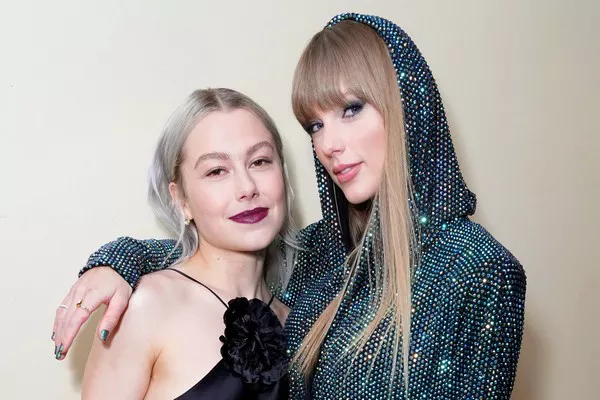Vitiligo is a skin condition that has captured the attention of many in recent years, thanks in part to the openness of some celebrities who have openly discussed their struggles with the disorder. In this article, we will delve into what vitiligo is, explore some notable celebrities who have vitiligo, and discuss the impact of their visibility on raising awareness and reducing stigma associated with the condition.
What is Vitiligo?
Vitiligo is a chronic skin disorder characterized by the loss of pigmentation in certain areas of the skin, resulting in white patches. These depigmented patches can appear on any part of the body and often spread over time. The condition is caused by the destruction of melanocytes, the cells responsible for producing melanin, the pigment that gives skin, hair, and eyes their color. While the exact cause of vitiligo is not fully understood, it is believed to be an autoimmune condition, where the body’s immune system attacks and destroys melanocytes.
Celebrity Spotlight: Who Has Vitiligo?
The visibility of celebrities who openly share their experiences with vitiligo has played a significant role in raising awareness about the condition. Here are a few notable celebrities who have vitiligo and have contributed to the conversation surrounding this skin disorder:
Michael Jackson
Perhaps the most famous case of vitiligo in the world was that of the King of Pop himself, Michael Jackson. The iconic singer and dancer revealed his battle with the condition in the 1990s. Jackson’s skin gradually lost its pigmentation, and he chose to embrace his changing appearance rather than attempting to hide it. His openness about his struggle with vitiligo helped shed light on the disorder and encourage others to be accepting of their differences.
Winnie Harlow
Canadian fashion model Chantelle Brown-Young, better known as Winnie Harlow, has become a prominent advocate for vitiligo awareness. She rose to fame after appearing on “America’s Next Top Model” and used her platform to educate the public about vitiligo. Harlow’s success in the modeling industry has challenged conventional beauty standards and inspired many individuals with vitiligo to embrace their uniqueness.
Jon Hamm
The critically acclaimed actor Jon Hamm, best known for his role as Don Draper in the TV series “Mad Men,” has also been open about his experience with vitiligo. He has shared that he developed the condition in his mid-20s and has since been candid about the challenges it has posed in his life. Hamm’s willingness to discuss vitiligo publicly has helped destigmatize the condition and highlight that it can affect anyone, regardless of their profession or fame.
Tamar Braxton
Singer and television personality Tamar Braxton revealed her vitiligo diagnosis to the world in 2012. She has been an advocate for vitiligo awareness and has used her platform to encourage self-acceptance and self-love among individuals with the condition. Braxton’s openness about her journey with vitiligo has resonated with many, emphasizing the importance of embracing one’s true self.
The Impact of Celebrity Visibility
The presence of celebrities who openly discuss their experiences with vitiligo has had a profound impact on both public perception and awareness of the condition. Here are some ways in which celebrity visibility has made a difference:
Reducing Stigma
One of the most significant contributions of celebrities with vitiligo is their role in reducing the stigma associated with the condition. By showcasing their own journeys and confidently appearing in the public eye, these individuals challenge preconceived notions about beauty and skin disorders. Their visibility helps normalize vitiligo and encourages acceptance and empathy.
Inspiring Confidence
Celebrities who have vitiligo serve as powerful role models for individuals who may be struggling with their self-esteem due to the condition. Seeing successful and confident figures with vitiligo can inspire others to embrace their uniqueness and feel more comfortable in their own skin.
Educating the Public
Through interviews, social media, and public appearances, celebrities can educate the public about vitiligo. They can share information about the condition’s causes, treatments, and the importance of self-care. This educational aspect is crucial for dispelling misconceptions and fostering a more informed and empathetic society.
Promoting Inclusivity
The presence of celebrities with vitiligo in the fashion and entertainment industries has contributed to a broader push for inclusivity and diversity. Their visibility highlights the need for greater representation of all skin types and encourages industries to be more inclusive in their casting and marketing.
Challenges and Misconceptions
Despite the positive impact of celebrity visibility, it’s important to acknowledge the challenges and misconceptions that individuals with vitiligo still face:
Misunderstanding of the Condition
While celebrities can help educate the public, misconceptions about vitiligo persist. Some may wrongly believe that it is contagious or that it can be easily cured. Ongoing efforts are needed to combat these misconceptions and provide accurate information.
Mental Health Struggles
Vitiligo can take a toll on an individual’s mental health, leading to feelings of self-consciousness and anxiety. Even with celebrity role models, individuals with vitiligo may still experience discrimination or negative self-perception, highlighting the need for mental health support.
Access to Treatment
Not all individuals with vitiligo have access to the same resources and treatments as celebrities. While some celebrities can afford advanced treatments, others may not have the same financial means. It’s important to address disparities in access to care.
Promoting Vitiligo Awareness Beyond Celebrities
While celebrity visibility has undoubtedly played a significant role in promoting vitiligo awareness, it’s essential to recognize that everyone’s experience with the condition is unique. Not all individuals have the same level of visibility or access to resources as celebrities do. Therefore, it’s crucial to continue the efforts to raise awareness through various channels:
Support Groups
Local and online support groups provide a sense of community and understanding for individuals with vitiligo. These groups offer a safe space for sharing experiences and coping strategies.
Educational Campaigns
Non-profit organizations, healthcare institutions, and advocacy groups should continue their efforts to educate the public about vitiligo through awareness campaigns, seminars, and workshops.
Accessible Treatment Options
Advocates and policymakers can work together to ensure that affordable and effective treatment options are available to individuals with vitiligo, regardless of their financial situation.
Inclusive Media Representation
The entertainment and fashion industries should prioritize inclusivity by featuring individuals with vitiligo in advertisements, TV shows, movies, and fashion campaigns.
Conclusion
Celebrities who have vitiligo have played a crucial role in raising awareness, reducing stigma, and inspiring confidence in individuals with the condition. Their openness about their own experiences has helped dispel misconceptions and promote greater inclusivity and acceptance. However, it is important to remember that the impact of vitiligo awareness extends beyond celebrities. Continued efforts are needed at all levels of society to ensure that individuals with vitiligo receive the support, education, and resources they need to thrive. Ultimately, the goal is to create a world where everyone can feel comfortable in their own skin, regardless of its color or appearance.

























